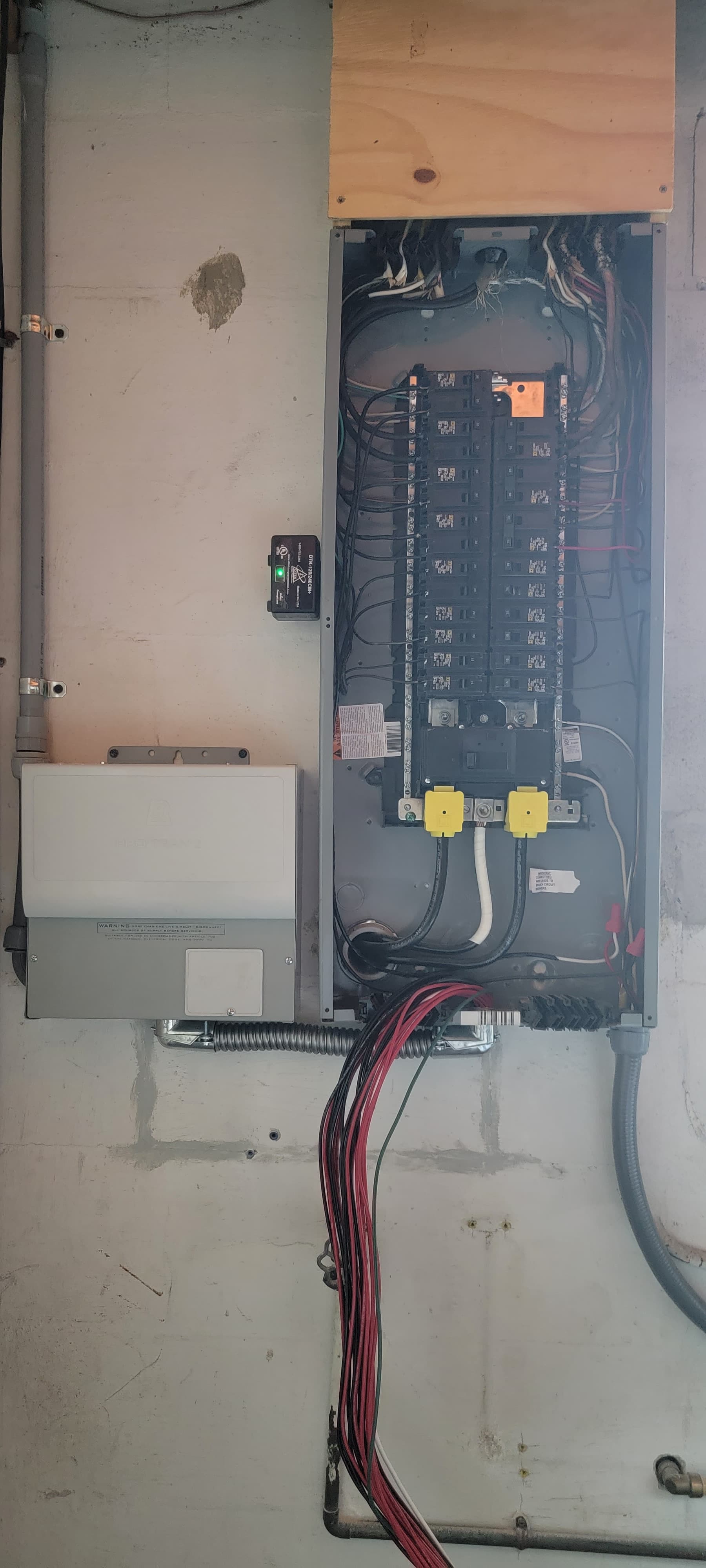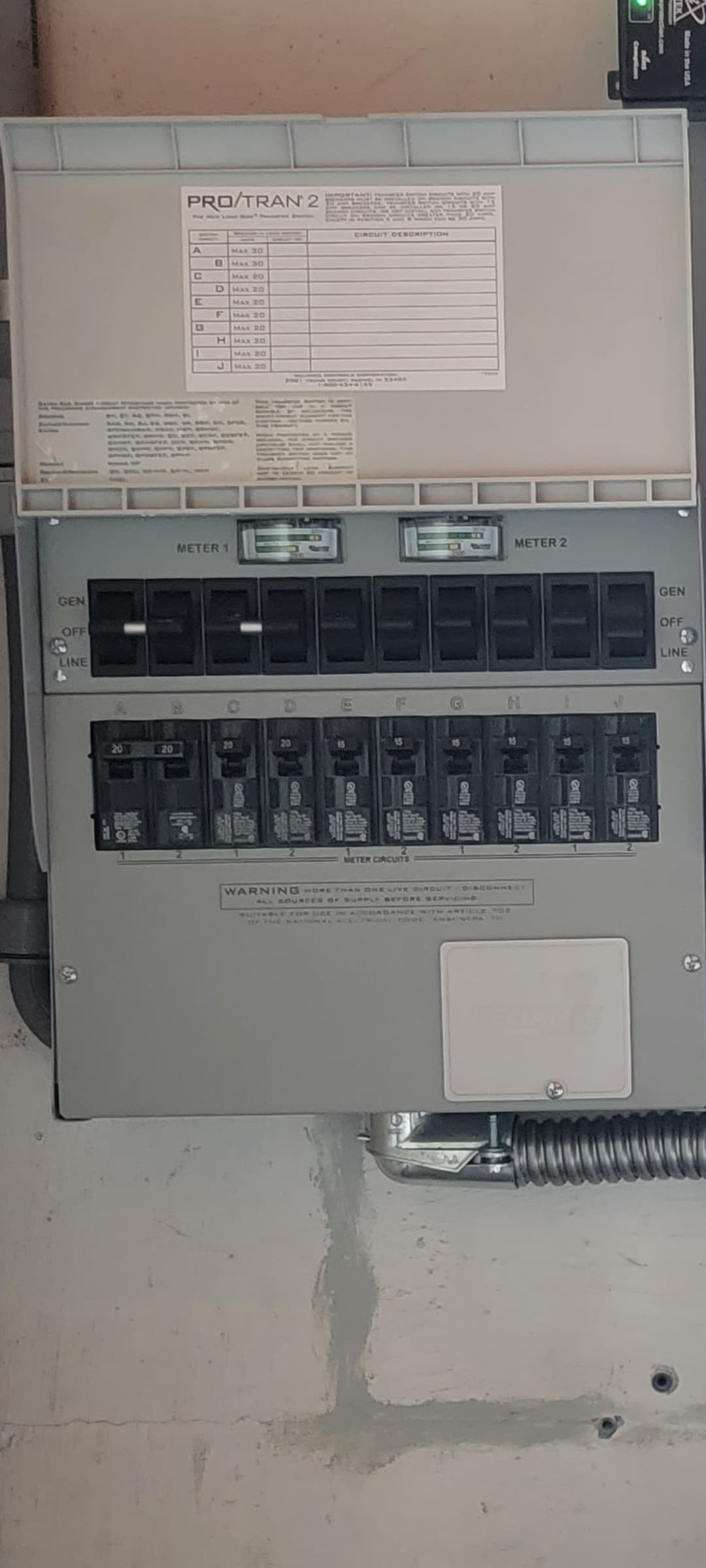I ordered my AC300 November of 2022, got it in December 2022. Any idea how to tell if it’s a “first gen” or not? If it is a newer one with the newer hardware change, should I still be worried about my transfer switch? I do not plan on grid charging if I don’t have to. I want to rely on solar and batteries only. As long as I don’t grid charge it, do you foresee any big issues? Obviously my biggest concern is a fire. I don’t want that lol. I am running it at the same time as the grid, because the grid is running all my 240V stuff (USA). Could this really cause a fire concern? I also do not have any GFCI breakers in the transfer switch. I just want to run the 10 120V circuits in my transfer switch full time on solar/battery only and have the grid power my 240v. Is this feasible or did I just waste thousands of dollars lolol
I’m assuming the AC500s don’t have any transfer switch issues/restrictions like the first gen AC300s?
If you got your AC300 in late 2022 (Dec), then you have the 2nd edition.
The only thing I would say you need to confirm is that you do not have any multi-branch circuits in your transfer panel. This is two circuits that were originally on different phases (L1/L2) that share a neutral. This would be an issue for your 120v transfer switch. Besides that you should be good.
No you didn’t waste your money… like I said I ran my AC300 environment for 9+ months… there’s always a work-around. I’m a partner with Bluetti and I will help you to ensure you get your money’s worth.
Since you have only a single AC300, not dual split-phase, you’ll be in good shape.
David
@glc650, I have yet to hear of an issue with the AC500. I have been running my dual AC500 environment for 4 months with no major issues. In addition the AC500 was sold on Indiegogo with an add on option of the Pro/Tran.
I would always recommend that if you have a choice, do not use the Pro/Tran. The Bluetti shouldn’t be sharing the electrical system with your main panel. It’s generally a “no no”, to push two power sources together unless they are designed specifically to do so. By doing so you can create over-voltages, cancellations or alternative paths…
Both Reliance and Generac make proper transfer switches that can be ran side by side with each other.
Also it should be noted. The original Bluetti Smart Panel, also didn’t not share the neutral.
Hope this helps
David
I’m doing pretty much exactly this. Works well 24/7 and offsets electricity pricing ($20-25/mth). The PV input draws when it needs to, otherwise Bluetti shuts off the input altogether. I had the Bluetti shutoff/fault one time (I think it was a grid spike) but that’s it to date (6months app). They released a firmware update since then. Also, I installed a 50A surge protection in front of the grid input (which protects the Bluetti and all circuits beyond it). I think Bluetti knows the app needs better notifications and the ability to reset remotely (their support can reset remotely). UPS is fine for me, in fact I can flip the transfer switch from LINE to GEN and everything stays on. I wish I had gotten the 10 circuit transfer (I have 6) because I know in the summer, I’m slightly oversized (8 panels). I’ll likely need to buy 2 more batteries. Very happy with the product to date (in Canada).
We have an AC300 and 4 B300s. Everything is used off the electrical circuit in “isolated habitat” mode (therefore not connected to the grid). Fridge, freezer, washing machine, box, microwave and 3 computers are permanently connected to it (from 5 different AC output connections) and everything works 24/7. I am in PV priority mode during the day and, if I have to recharge it, I go into Standard UPS mode for 2/3 hours at night while continuing to use the connected devices. No worries for 7 months that it is installed.
contem4 : What type of floor panel is used?
Do you have the Pro/Tran2 transfer switch? Any issues with the neutral debacle? Also, explain to me more about the 50A surge protection lol
Any tips for me to confirm that I don’t have any multi-branch circuits? How would I be able to tell? Even if I don’t, does the fact that my Pro/Tran2 doesn’t isolate the neutral mean that I could potentially cause a fire? I just want to feel confident in my purchase and confident enough to run this thing 24/7 thru the transfer switch with the grid running my 240v simultaneously. If we leave for longer than a day or two, it will all get shut down and switched back to grid power until we return. But if we’re both at work during the day, I am kind of terrified still to leave it running with two dogs in the house. God forbid there was a fire, I’d never forgive myself.
@contem4, before you moved your circuits from your main panel to your Pro/Tran transfer switch where any of the circuits “tied” together. I’m not talking just about 240v circuits, but were there any 120v circuits tied together?
If yes, then those may have been multi-branch circuits that share a neutral.
David
If you had an electrician wire your transfer switch then you should be fine. They would know if you have any multi branch circuits.
But if you want to check for yourself then look for 15A or 20A breakers that are tied together and that are not 240v.
I had an electrician install the transfer switch. I’m not sure how to tell if they are tied together or not. I did not have any double-taps in the main if that is what you mean.
As in a double pull 20? I didnt have any double taps in the breaker, but the transfer switch has a couple breakers that are a two pull 20. I don’t know how to check lol. I attached some pics, any of that answer anything?
It’s hard to see from the picture - but on your transfer switch do you have A and B tied together on the rocker switches to go from Gen to Line but you don’t have the first 2 breakers tied together?
I don’t know :( I just want to know I’ll be ok with this setup lol. I don’t know what to look for to see if A and B are tied together or not on the rockers. Let’s say I did have multi-branch circuits…when the electrician installed the transfer switch, would that be something that he would have corrected/avoided? You think he would have brought that to my attention or no? I am dying to start running this thing full time once I finish my solar setup which should be this weekend. I have turned it on and ran all 10 circuits without issue, but I know that doesn’t mean everything is automatically fine and I won’t have any issues.
Sorry - I’ll try to simplify.
On the first 2 rocker switches is there a plastic piece that holds them together so that when you pull one down it pulls the other one down.
And, second question, are the first two breakers like that too?
Yea, the first two sets of rockers are joined, but only the first two breakers are joined. All this in the transfer switch. If you zoom in a bit on the picture of the it, you can see the two rockers and one breaker that are joined together (like a double pull 20)
Ok - so not an electrician here, but this is what I see.
Normally when you have 2 20A breakers together it’s running to one appliance - for instance my electric 240v stove or my 230v air conditioning compressor.
So - A,B look correct to me, as you would not want to shut off part of that circuit - you would want both 20A breakers to be either ON or OFF. What does this power by the way?
C,D looks wrong to me, however I am not an electrician. The rockers for C and D are tied together so both C and D breakers will be switched between line and generator yet C and D breakers are not tied together - they seem totally independent to me.
Maybe somebody else can chime in?
Couple of things. One is that we don’t know which of the transfer switch circuits are tied to which of the circuit panel circuits, so we don’t know if A & B in the transfer switch are also A & B in the panel, or not.
Also, if the transfer switch has two circuits physically linked, ie: C & D, but those breakers are not linked in the circuit panel that is not a problem. It would just mean that those 2 circuits will always both be on grid power or on backup power together (and both 120 volts, in USA).
I’d like to check my circumstances related to your comment. I have one of the earliest AC300 models (2 x B300 too). I have had mine connected to my protrans transfer switch since last August powering a few circuits continuously (for the most part). I never connect the AC300’s AC charger plug to any grid circuit (that caused a failure in my original unit), and I only charge by solar. Obviously the transfer switch connects the ground and neutral to the main circuit panel’s connections as it only switches the hot wire. My AC300 has never given any error while set up this way, and it is definitely not a 2nd gen version, based on the December 2022 date. My understanding is (this is what I’m questioning) that as long as I don’t connect both the AC charging input and the output to the grid neutral and ground at the same time I should not have an issue with what I’m doing?



